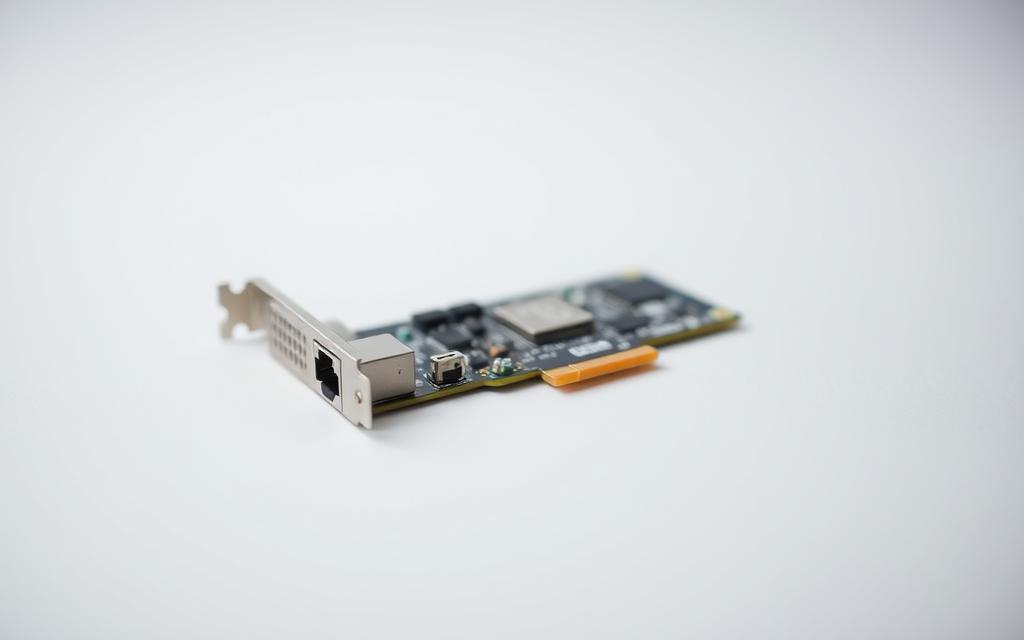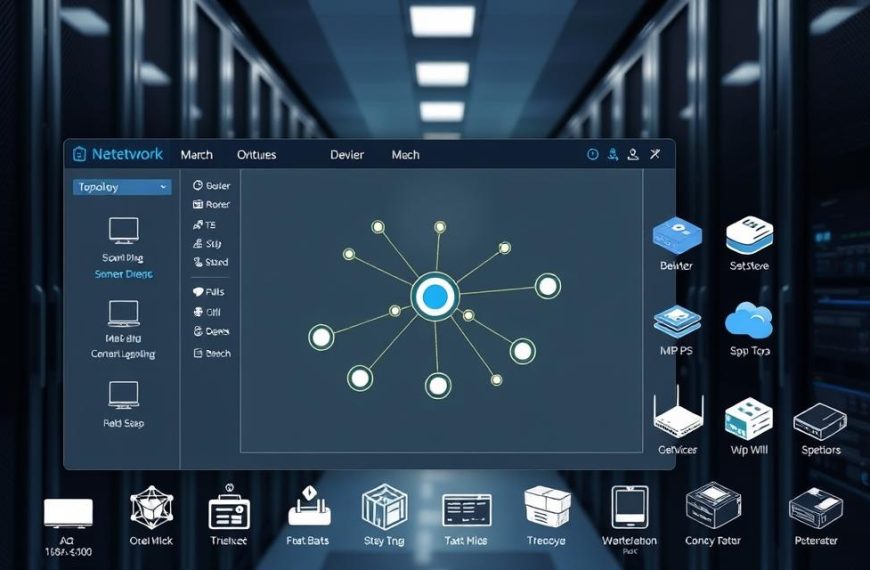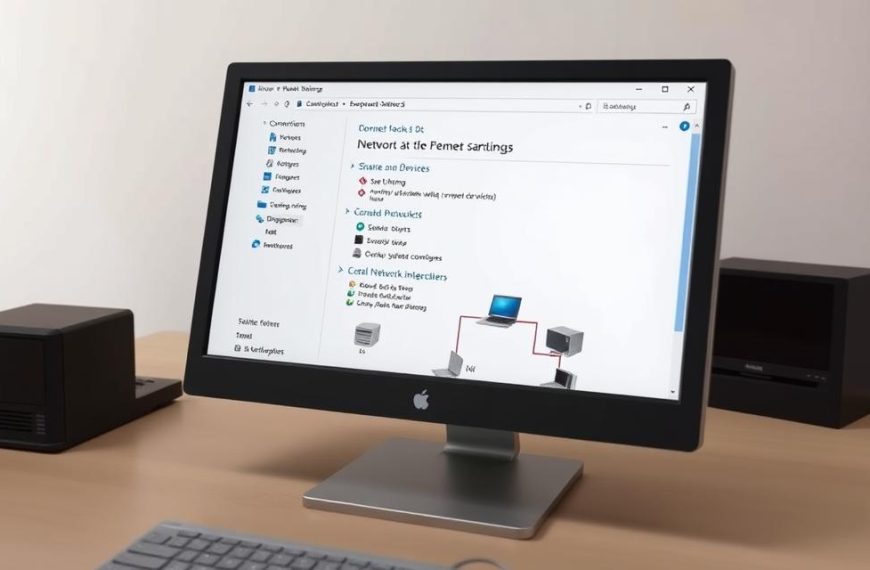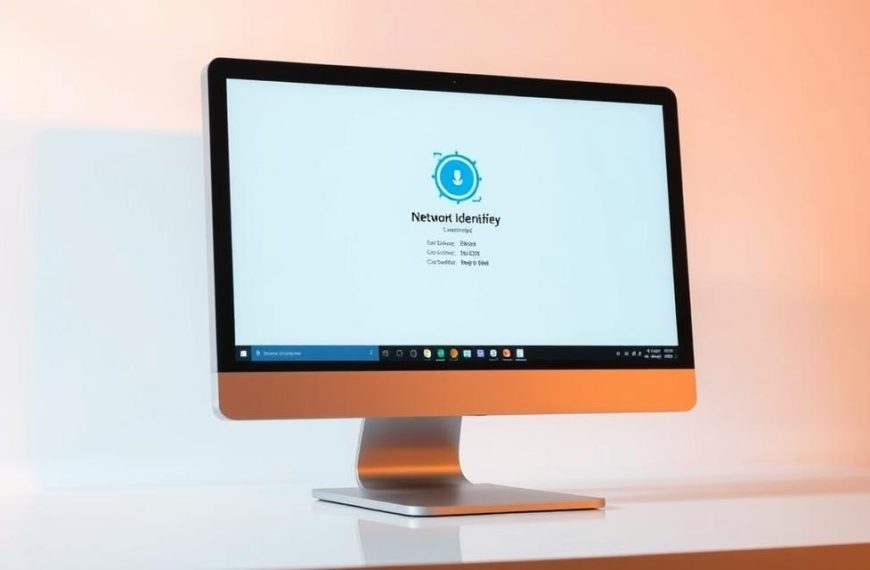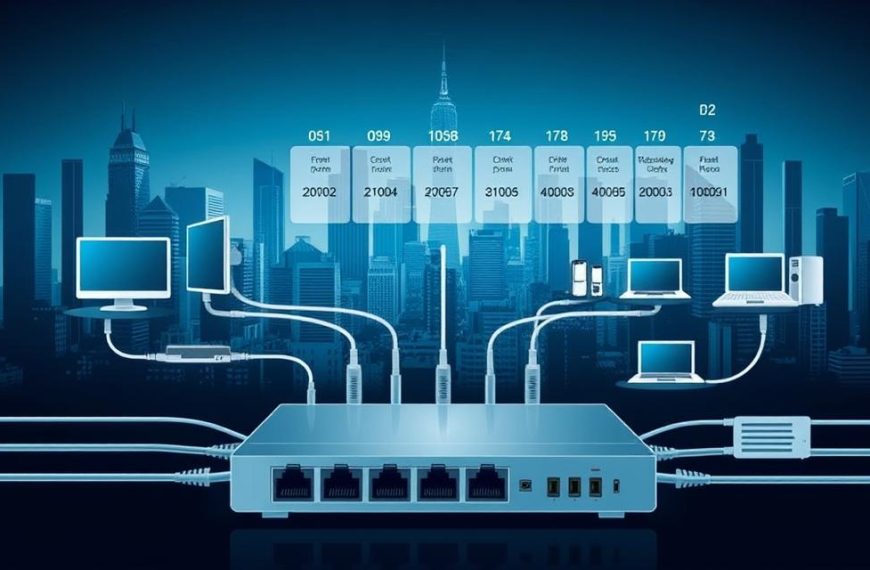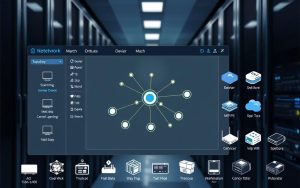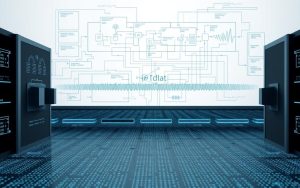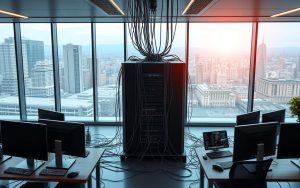Every computer needs a special part to connect to networks and use online resources. This key piece of computer hardware is called a network adapter.
It’s also known as a network interface card or NIC. This device is your computer’s physical link to local networks and the internet. It changes digital signals from your computer to network cables or wireless signals.
The adapter can be built into the motherboard, added as a card, or connected via USB. Each type does the same thing: it lets your computer talk to others.
Every network adapter has a unique MAC address. This address makes sure data gets to the right place safely and quickly.
Without it, you can’t have a stable internet connection or join local networks. It’s the essential hardware for connecting to networks.
Defining the Network Adapter: Your Computer’s Gateway
A network adapter is key to linking your computer to the internet and local networks. It’s a vital hardware component that turns digital info into signals for sending and receiving data.
Essential Functions and Operations
Network adapters do a lot to help devices talk to each other. They change digital data into signals for data transmission. This lets them send and receive data smoothly.
Each adapter has a special ID called a MAC address. This ID makes sure data gets to the right device. Unlike IP addresses, the MAC address never changes.
These adapters work mainly in the first two layers of the OSI model. They handle the physical connection and manage data link, including error checking and access control. This is why they’re so important for network communication.
Historical Development and Evolution
Network adapters have changed a lot over time. Early ones were separate cards that users had to install. They were hard to set up.
But then Ethernet became popular and affordable. This led to adapters being built right into computer motherboards. This made things simpler and cheaper.
Now, computers usually have built-in adapters for both wired and wireless connections. This shows how far we’ve come in making these hardware components smaller, cheaper, and better.
| Era | Adapter Type | Connection Method | Typical Speed |
|---|---|---|---|
| 1980s-1990s | ISA Expansion Cards | Wired Ethernet | 10 Mbps |
| 1990s-2000s | PCI Network Cards | Wired Ethernet | 100 Mbps |
| 2000s-Present | Integrated Motherboard | Wired/Wireless | 1 Gbps+ |
| 2010s-Present | USB Adapters | Mostly Wireless | Up to 2.4 Gbps |
This change has made connecting to the internet and local networks easier and faster. It shows how important network adapters are in today’s tech world.
What is a Network Adapter on a Computer: Types and Varieties
Network adapters come in many forms to meet different needs. Knowing the types helps users pick the right one for their needs.
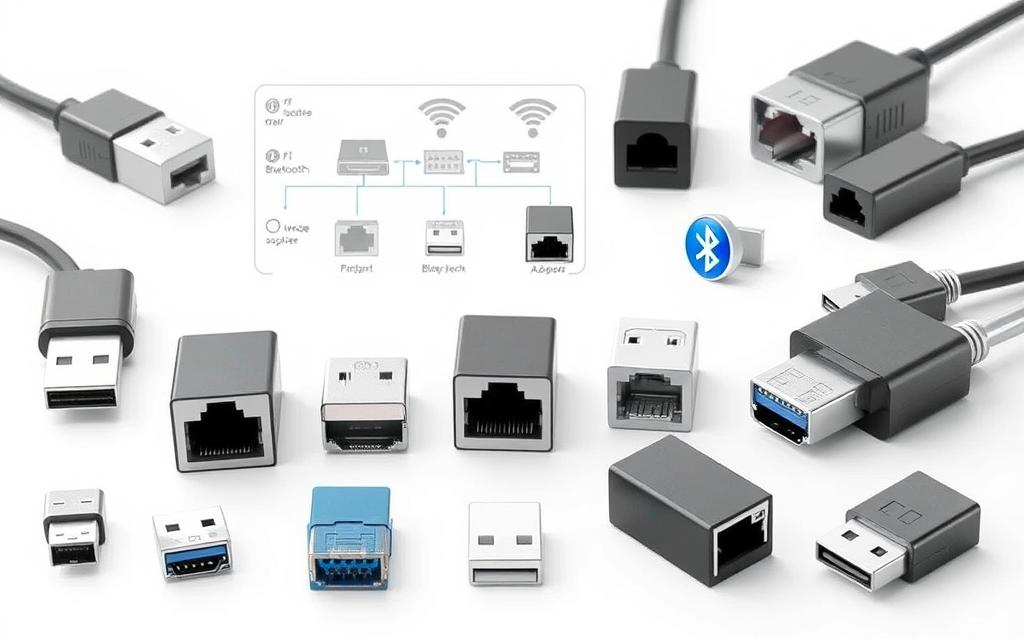
Wired Ethernet Adapters: Traditional Connectivity
Wired Ethernet adapters are the base of network connections. They offer reliable performance through cables. These adapters have RJ45 ports for Ethernet cables, making stable connections.
Wired solutions are known for their consistent performance. Ethernet adapters have better data transfer rates and less delay than wireless. They’re great for tasks like video streaming and online gaming.
Wired connections are also more secure. Data travels through cables, not airwaves, making them safer. Many organisations use Ethernet adapters for secure operations.
Wireless Network Adapters: Modern Mobility
Wireless adapters have changed how we connect, removing the need for cables. They use radio signals for connections, giving great flexibility. Most wireless adapters follow Wi-Fi standards like 802.11ac and Wi-Fi 6.
There are many types of wireless adapters, like PCIe cards for desktops and USB dongles for laptops. This makes it easy to add wireless to any device.
Wireless adapters are convenient but can be affected by signal range and interference. Physical barriers, distance, and other wireless signals can impact performance. Choosing adapters with features like dual-band can help.
Specialised and Alternative Adapter Types
There are also special adapters for specific needs. Fibre Channel adapters, for example, offer fast connections for data-heavy tasks in big networks. They’re key for high-performance applications in large organisations.
Older adapters like Token Ring and ATM are less common today but were important in networking’s past. Knowing about them helps us understand how networks have evolved.
Some adapters can connect different networks or offer unique features. Powerline adapters send data through electrical wiring, and industrial adapters work in tough environments. These options solve problems that regular adapters can’t.
Technical Operation: How Network Adapters Facilitate Communication
Network adapters act as translators between your computer and the network. They handle complex tasks that make networking work. This includes preparing data and sending signals.
Data Packet Processing and Preparation
When your computer sends data, the network adapter starts by breaking it down. It turns data into smaller units called data packets. This involves several important steps:
- Segmentation: Large files are split into smaller packets for easy sending
- Framing: Each packet gets header and trailer info with address and control data
- Error checking: CRCs are added to find any transmission errors
- Prioritisation: Packets are sorted by urgency and importance
The adapter makes sure each packet has the right info for delivery. This careful encoding data ensures information arrives right and in order.
Protocol Management and Signal Conversion
Network adapters must understand network languages. They manage protocols like the TCP/IP suite. This lets devices talk to each other.
The most amazing part is signal conversion. Digital data from your computer turns into physical signals for the network:
- Copper Ethernet: Digital bits become electrical voltage changes
- Fibre optics: Data turns into precise light pulses
- Wireless networks: Data is modulated onto radio frequency waves
This process works both ways. When data comes back, the adapter changes physical signals into digital info your computer can use. It also handles protocol acknowledgements, retransmission requests, and flow control to avoid network jams.
Thanks to these advanced processes, network adapters make sure communication flows smoothly. They make modern computing and internet access possible.
Critical Specifications and Performance Characteristics
Choosing the right network adapter is key to top-notch network performance. Its specs affect how fast data moves, how stable the connection is, and your overall experience.
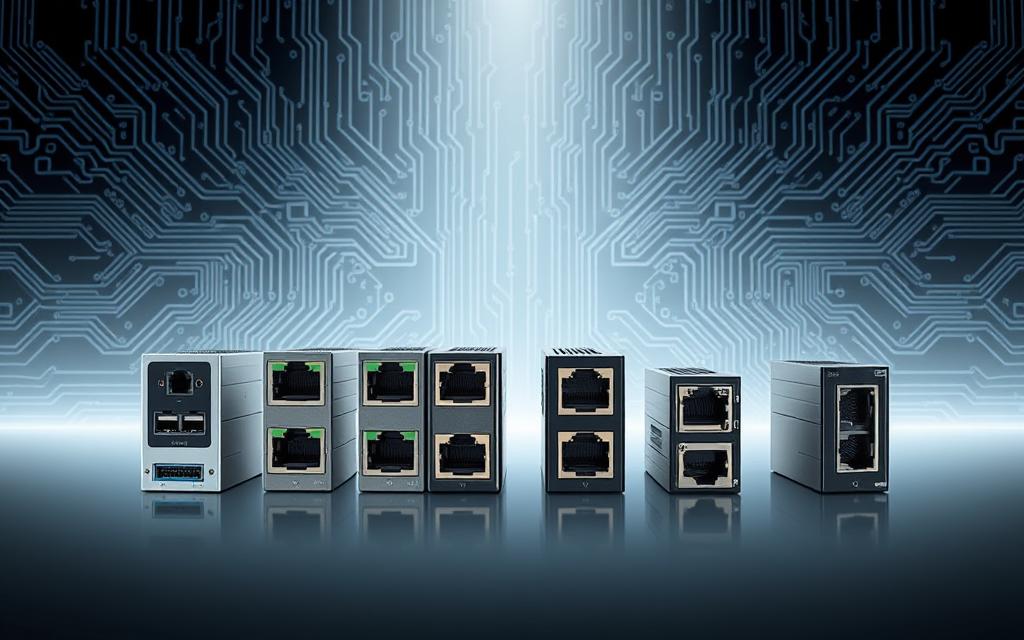
Speed Ratings and Bandwidth Capabilities
Today’s network adapters come in different speeds. Wired Ethernet adapters usually have speeds like 10/100/1000 Mbps. Gigabit Ethernet is the standard for most homes and offices.
For heavy use, adapters with speeds like 2.5, 5, and 10 Gbps are better. Wireless adapters, on the other hand, follow Wi-Fi standards. Wi-Fi 6 is faster and more efficient than older versions.
Bandwidth is how much data can move at once. More bandwidth means more devices and activities without slowing down. Latency, or how quickly you get a response, is also key for things like gaming and video calls.
Compatibility Requirements and Interface Standards
How your adapter connects to your system matters. There are three main types:
- PCIe cards for desktop computers
- USB adapters for universal use
- Motherboard integration for built-in options
Motherboard integration means no extra slots needed. But, external adapters are great for upgrading older systems.
Make sure your adapter’s standards match your router’s. A Wi-Fi 6 adapter needs a Wi-Fi 6 router to work best. Also, Ethernet adapters need the right network setup to reach their speeds.
Check if your adapter fits your system and ports before buying. This ensures it works well in your network.
Installation and Configuration Processes
Setting up a network adapter needs focus on both physical links and driver management. A good setup lets your computer talk to networks and get to the internet easily.
Physical Installation Techniques
Most modern motherboards have built-in network features. These ports usually support Ethernet cables for wired connections.
External adapters need different setups. PCIe cards go into a PCIe slot on your motherboard. Make sure your computer is off before you start.
USB wireless adapters are easy to use. They plug into your computer’s USB ports. This is great for devices without wireless.
Always check your cables and adapters before you start the software setup. Bad connections can stop your network from working.
Software Configuration and Driver Management
After you’ve installed your adapter, your computer needs the right drivers. Most systems find and install these drivers automatically.
The Windows device manager is key for managing your hardware. You can find it by right-clicking the Start menu and choosing Device Manager.
“Proper driver management turns hardware into working network tools.”
Driver installation often happens automatically through Windows Update. For manual installs, get drivers from the maker’s website, not third-party sites.
Look for yellow exclamation marks in Device Manager. These mean you need to update or roll back drivers. You can do this from the device’s properties menu.
For full router setup integration, make sure your adapter gets an IP address from your router. This usually happens automatically through DHCP.
| Installation Type | Difficulty Level | Tools Required | Time Required |
|---|---|---|---|
| Built-in Ethernet | Easy | Ethernet cable | 1-2 minutes |
| USB Wireless | Easy | None | 1-3 minutes |
| PCIe Card | Moderate | Screwdriver | 5-10 minutes |
| Driver Update | Easy | Internet access | 2-5 minutes |
Unrecognised devices might need manual driver installs. Always restart your computer after updating drivers to make sure they work right.
Troubleshooting Common Network Adapter Issues
When your network connection falters, the network adapter often sits at the heart of the problem. Effective network troubleshooting requires a systematic approach. This section guides you through resolving the most frequent connectivity problems.
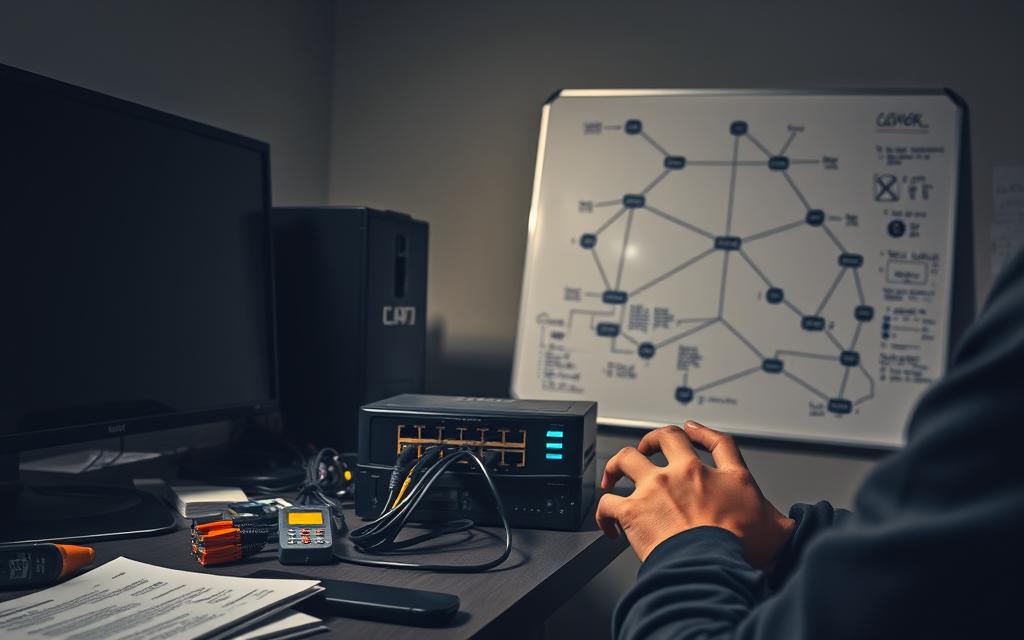
Connectivity and Performance Challenges
Intermittent connections plague many users. Start by checking physical cables for wired adapters. For wireless setups, examine router placement and possible interference from other devices.
Complete no internet access errors demand immediate attention. Verify whether other devices connect to the same network. If they do, your adapter might be the culprit.
Slow speeds can frustrate even experienced users. Test your internet speed during different times. Compare results with your subscribed plan. Bandwidth-heavy applications might be consuming resources.
Dropped connections often point to signal issues. Move closer to your router for wireless setups. For wired connections, inspect Ethernet cables for damage.
Network interface errors appear in system logs. Windows includes a built-in network troubleshooter that automatically diagnoses many common problems.
Driver Conflicts and Compatibility Problems
Software issues frequently cause adapter malfunctions. Outdated, corrupted, or incompatible drivers lead to most driver conflict situations. These manifest as yellow exclamation marks in Device Manager.
Updating drivers often resolves compatibility issues. Visit your manufacturer’s website for the latest versions. Avoid using generic driver update utilities.
Sometimes newer drivers introduce problems. If issues began after an update, consider rolling back to a previous version. Device Manager allows you to revert to earlier driver iterations.
Hardware failure remains a possibility when software solutions fail. Test your adapter in another computer if possible. Consistent problems across systems indicate replacement necessity.
Remember that troubleshooting requires patience. Document each step you take. This helps identify what resolved the issue for future reference.
Conclusion
A network adapter is key for your computer to connect to local and internet networks. It’s a vital link for all digital communication. This makes it essential for today’s computing needs.
Choosing an adapter means deciding between wired Ethernet’s steady connection and wireless’s freedom. Each has its own benefits for different situations and places.
Knowing how to install, manage drivers, and troubleshoot is important for a stable network. Understanding what your adapter needs ensures it works best.
This summary shows network adapters are critical for getting online. They keep up with new network tech while keeping us connected for work and play.

